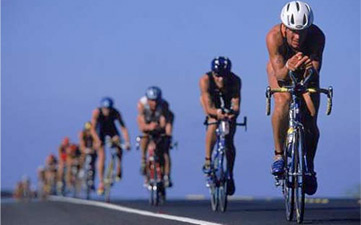It’s that time of the year again, the birds are chirping and the bees are bumping. It’s time to take that bike out of the garage and start logging some miles on the road or trails. Being an avid cyclist myself, I know from personal experience that it is very common to suffer from a variety of ailments secondary to cycling. Now I’m not just talking about from crashing, but many sources of pain stem from an improper fit on the bike. Two of the most common cycling relating injuries we see as physical therapists are low back pain and knee pain. Now for the competitive cyclist, proper bike fitting is extremely specific and down to the millimeter. This type of fitting should be done by a certified bike fitting specialist at your local bike shop. But for the casual rider just a few simple do it yourself adjustments can lead to a world of difference. Trust me, I know from experience.
The first place to start is the seat, aka the saddle. There are three primary adjustments that can be made to the seat on most bikes: the height, tilt angle, and distance from the handlebars. When adjusting the seat height you want it to be at a height where when you’re at the bottom of your pedal stroke you still have approximately 25-30 degrees of knee flexion. Too high and you will be over extending, and too low and you will be under extending putting increased compression forces on the knee or friction on the iliotibial band which can result in patellofemoral syndrome or IT band syndrome.
When adjusting the seat tilt, you want the seat to be level. If the seat is tilted slightly downward it will make your weight slide forward in the seat causing you to put increased pressure on your hands/wrists which could cause carpal tunnel syndrome. It also causes your pelvis to rotate forward which can lead to low back pain or sacroiliac joint (SIJ) dysfunction. Having the seat tilted backwards would cause the pelvis to rotate backwards which could also result in low back or SIJ pain. This adjustment can be simply made by place a firm flat object on top of the seat such as a clipboard, and then placing a small level on top.
When adjusting the forward/backward position of the seat you want it to be not so far back that you have to lean excessively forward to reach the handle bars, as this can cause back pain; and not so far forward that when at the top of your pedal stroke your knee is not passing excessively over your toes, which would result in increased compression forces on the knee and could again cause patellofemoral syndrome or ITB syndrome.
If you are experiencing any of the symptoms mentioned above, making adjustments to the bike can help reduce your pain. However there are likely musculoskeletal or biomechanical issues that may be contributing to your pain. As physical therapists we are skilled at screening each individual patient to locate their specific impairments which may be causing pain. These include muscle flexibility and tightness, joint hypomobility, pelvic rotation, and muscle weakness or imbalance. We can help create an individualized stretching and strengthening program to help correct muscle imbalances and improve your body mechanics on the bicycle to help prevent low back and knee pain, in addition to proper bike fitting.
Finally, remember to take short test rides after making even the smallest bike adjustment before taking it out for a long ride. If you still aren’t happy with your bike’s set up, seek help from your local professional.
Peter Geloso, DPT received his doctorate degree in physical therapy from Elon University in Elon, NC. He is a competitive racing cyclist and competes in races throughout New England. As a practicing physical therapist he has wide experience in many athletic injuries. He can be reached at Amity Physical Therapy, Woodbridge office, at 203-389-4593. Or visit www.amitypt.com

